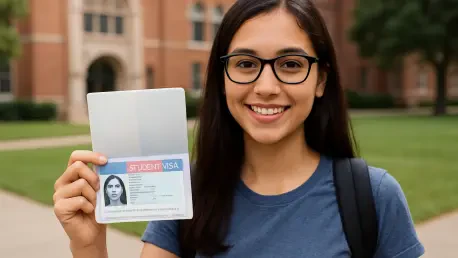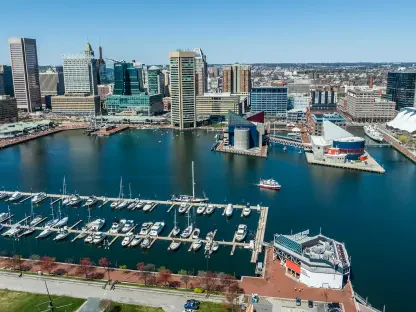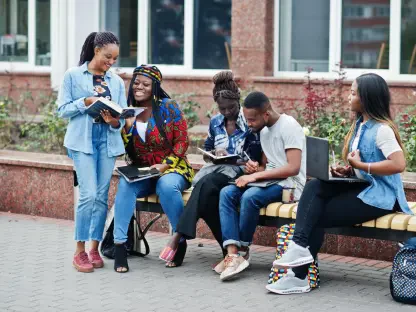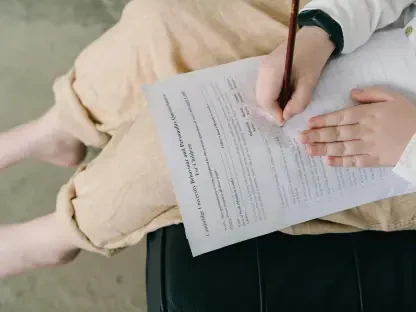I’m thrilled to sit down with Camille Faivre, a renowned expert in education management with a deep focus on higher education policies and trends. In the wake of the global pandemic, Camille has been at the forefront of helping institutions adapt through innovative open and e-learning programs. Today, we’re diving into a critical topic: the impact of recent student visa policies on U.S. colleges, particularly specialty institutions, and what this means for the future of international enrollment. Our conversation explores the vulnerabilities of small private and Christian colleges, the financial ripple effects on public universities, and the broader implications of restrictive visa regulations on both campuses and local economies.
Can you help us understand why small private colleges, especially those with specialized programs, are so vulnerable to declines in international student enrollment?
Small private colleges often operate on tight budgets and rely heavily on tuition revenue to sustain their programs. Many of these institutions, especially those with niche focuses like arts or business, attract a significant proportion of international students—sometimes up to 30% of their total enrollment. Unlike larger universities with diverse revenue streams, these colleges don’t have the financial cushion to absorb a sudden drop in numbers. Losing such a large chunk of their student body could mean cutting programs, laying off staff, or even facing closure, as we’ve seen with some small colleges in recent years.
What might happen to the financial stability of these smaller institutions if they suddenly lose a significant portion of their international students?
A sudden loss, say 30% of their student population, could be catastrophic. For many of these colleges, international students pay full tuition, often without financial aid, which forms a critical part of their operating budget. This kind of drop could lead to immediate cash flow problems, forcing them to scale back on faculty, reduce course offerings, or dip into endowments—if they even have substantial ones. In the worst cases, it could push already struggling institutions toward closure, especially since many have been grappling with enrollment declines even before these policy changes.
Why do you think Christian colleges, in particular, have such a high percentage of international students compared to other types of institutions?
Christian colleges often have a strong appeal to international students due to their emphasis on community, values, and a global mission. Many of these institutions are tied to evangelical traditions that prioritize spreading their faith worldwide, which resonates with students from countries where similar religious values are prominent. Additionally, these colleges often offer a supportive environment with smaller class sizes and personalized attention, which can be especially attractive to international students navigating a new cultural landscape.
How do you see restrictive visa policies potentially affecting the ability of Christian colleges to maintain their international student populations?
Restrictive visa policies could significantly disrupt the flow of international students to Christian colleges. These policies, like requiring social media reviews during consular interviews, create additional hurdles and may deter students from applying due to privacy concerns or fear of rejection. For Christian colleges, where international students often make up a large share of enrollment, this could mean a sharp decline in revenue and challenges in maintaining their unique campus culture. Some might need to pivot to domestic recruitment or online programs, but those strategies take time and resources they may not have.
Turning to public institutions, how do they depend on the higher tuition rates paid by international students to balance their budgets?
Public institutions, especially in states with constrained budgets, often rely on the higher tuition rates paid by international and out-of-state students to subsidize in-state students and fund campus operations. For example, at some universities, international students pay triple the in-state rate, which helps cover everything from faculty salaries to infrastructure maintenance. This revenue stream is crucial, especially for schools facing cuts in state funding. Without it, they might have to raise in-state tuition, cut programs, or reduce services, which can impact the overall quality of education.
If international enrollment drops, how might the financial impact differ between public universities and private colleges?
The impact varies due to differences in scale and funding sources. Public universities often have larger student bodies and more diverse revenue streams, including state funding and research grants, so while a drop in international enrollment hurts, they might weather it better through budget adjustments or increased domestic recruitment. Private colleges, especially smaller ones, lack that buffer. Their smaller size and heavy reliance on tuition mean a similar drop could be far more devastating, potentially threatening their very existence.
Can you walk us through some of the recent changes in student visa policies and what they mean for international students trying to study in the U.S.?
Recently, there have been notable shifts in visa policies, such as the reopening of consular interviews after temporary freezes, but with new requirements like unlocking social media accounts for review by consular officers. This is meant to screen for content deemed hostile to U.S. values or culture, but it raises privacy concerns and adds stress to the application process. These changes primarily affect first-year students, new graduate students, or those renewing visas, as they must go through consular scrutiny, unlike continuing students already in the country with active visas.
Do you think these new visa rules could discourage international students from choosing the U.S. as their study destination, and if so, why?
Absolutely, these policies can be a deterrent. The added scrutiny, especially around personal social media, feels invasive to many students and can create a sense of being unwelcome before they even arrive. Additionally, the uncertainty and delays in visa processing can push students to consider other countries like Canada, Australia, or the UK, where policies are often more streamlined and welcoming. Over time, this could shift the U.S.’s reputation as a top destination for higher education, which would have long-term economic and cultural consequences.
We’ve seen varied trends in international enrollment, with some elite schools maintaining steady numbers while others report declines. What factors do you think are driving these differences?
Elite schools often have strong brand recognition, substantial financial resources, and established international networks that help them maintain enrollment even in tough times. They can offer more scholarships or support services to attract and retain international students. On the other hand, less prestigious or resource-constrained institutions might struggle to compete, especially if they’re in regions less known to international applicants or lack the infrastructure to navigate visa challenges. Location, reputation, and institutional support all play significant roles in these disparities.
Looking ahead, what is your forecast for the future of international student enrollment in the U.S. given these policy challenges?
I’m cautiously optimistic but realistic about the challenges. If restrictive visa policies persist or tighten further, we could see a sustained decline in international enrollment, particularly at smaller and less prestigious institutions. However, if the U.S. government prioritizes streamlining visa processes and fostering a welcoming environment, there’s potential to recover and even grow these numbers. The competition from other countries is fierce, though, so it will require intentional policy shifts and institutional innovation to maintain the U.S. as a top choice for global talent.









